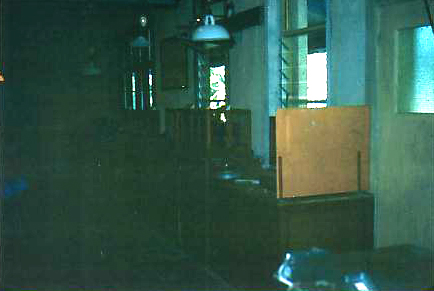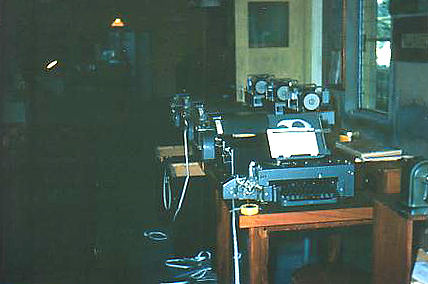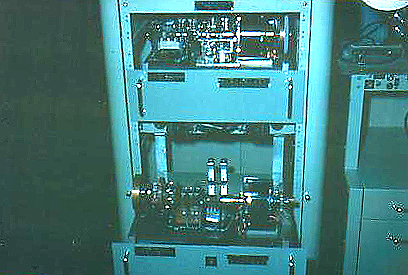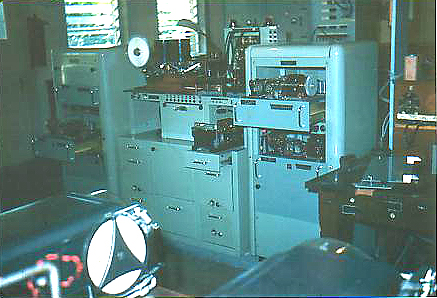Fanning Island (From our Archives)
Letter from Desmond Kinnersley (25/2/04):
I am attaching some digital photos of some of the equipment in use on the old telegraph cables. They were taken at Fanning Island in 1962 about a year before the station closed due to COMPAC coming into service.
The equipment pictured was the the tri channel equipment used at Fanning Island on the fast cables between Suva, Fanning and Bamfield(Vancouver) to provide time division mutliplex operation ( even though it was done with cams and contacts). Additional slow speed cables were also operational between these stations.

Both these cable types were capable of SIMPLEX operation only, so the direction of operation on the Fast/Slow cables depended on Traffic peaks.
Normally these cable were switched on a 12 hourly basis.
When working FAST HOMES (towards London) to suit Australian/NZ traffic peaks, the three channels were integrated at Suva:
A channel traffic from Sydney using the Sydney/Southport/Norfolk Island/Suva cables operating at 1087 ch per minute.
B channel traffic from NZ using the Auckland/Suva cable operating at 1087 ch per minute.
C Channel traffic from Sydney on a radio link uisng Double Current Cable Code equipment and later TOR working using Hasler MUX’s.
These three channels were then sent at an aggregate speed of 3262 ch per minute on the Suva/Fanning/Vancouver cables. A/B channels were then sent on to London using the Trans Canada landlines and Atlantic cables.
C channel was terminated at Montreal for Canadian traffic.
To suit UK traffic peaks, the cables were Changed Over to FAST OUTS (towards Australia/NZ).
A & B channels from London and C channel from Montreal were aggregated at Vancouver and sent on the Vancouver/Fanning/Suva cables at a speed of 3262 ch per minute where they were split at Suva into three separate channels.operating at 1087 ch per minute
A channel being sent to Sydney via the Suva/Norfolk Island/Southport/Sydney cable.
B channel being to Auckland via the Suva/Auckland cable.
C channel was terminated at Suva for local traffic.
The Suva/ Norfolk, Suva/Auckland and Sydney/Auckland cables were DUPLEX cables.
Note The speed of transmission on these cables were expressed in centre holes per minute. They refer to the small centre holes on the perforated tape which engage with the sprocket that feeds the tape through the transmitter unit.





Leave A Comment
You must be logged in to post a comment.